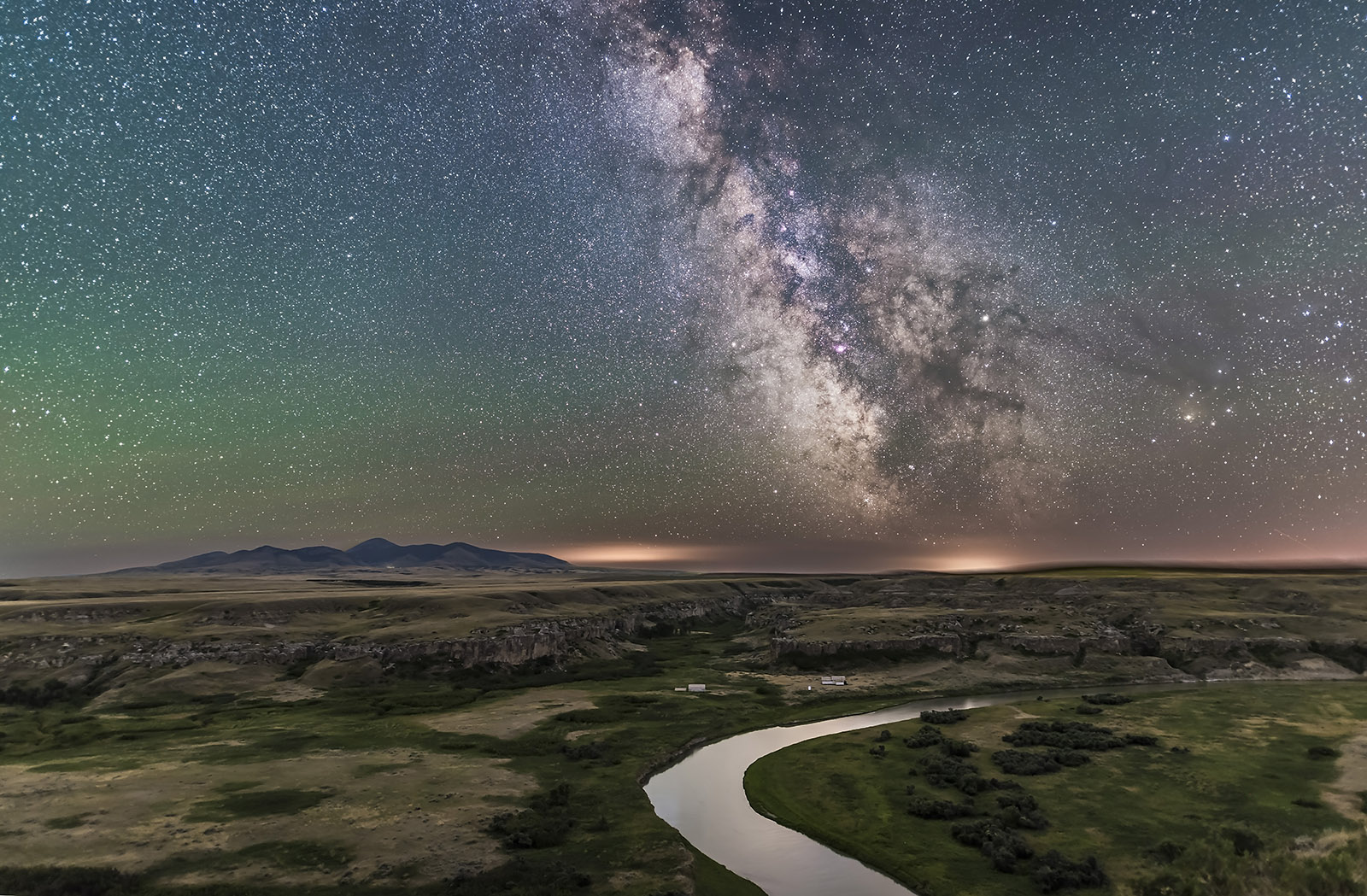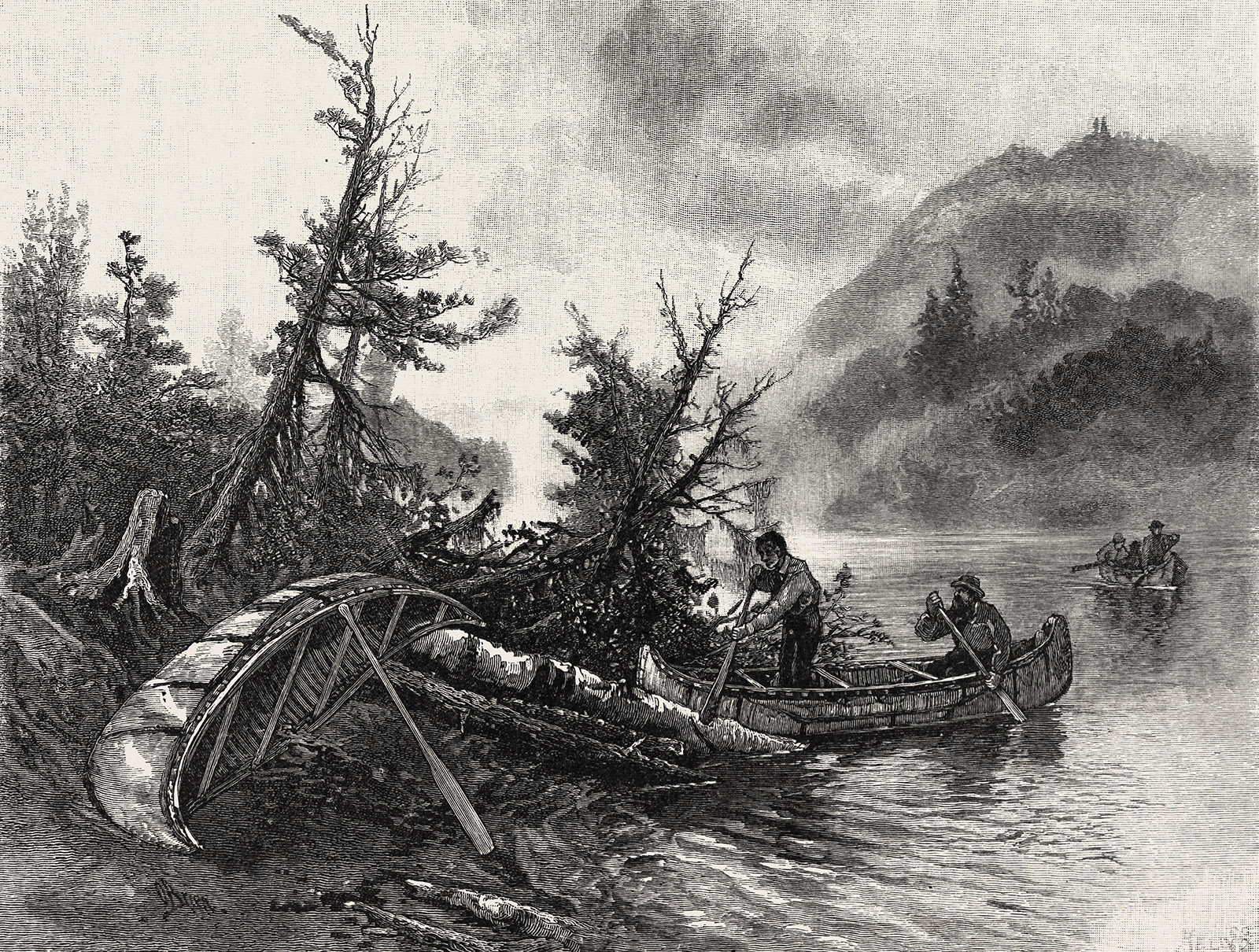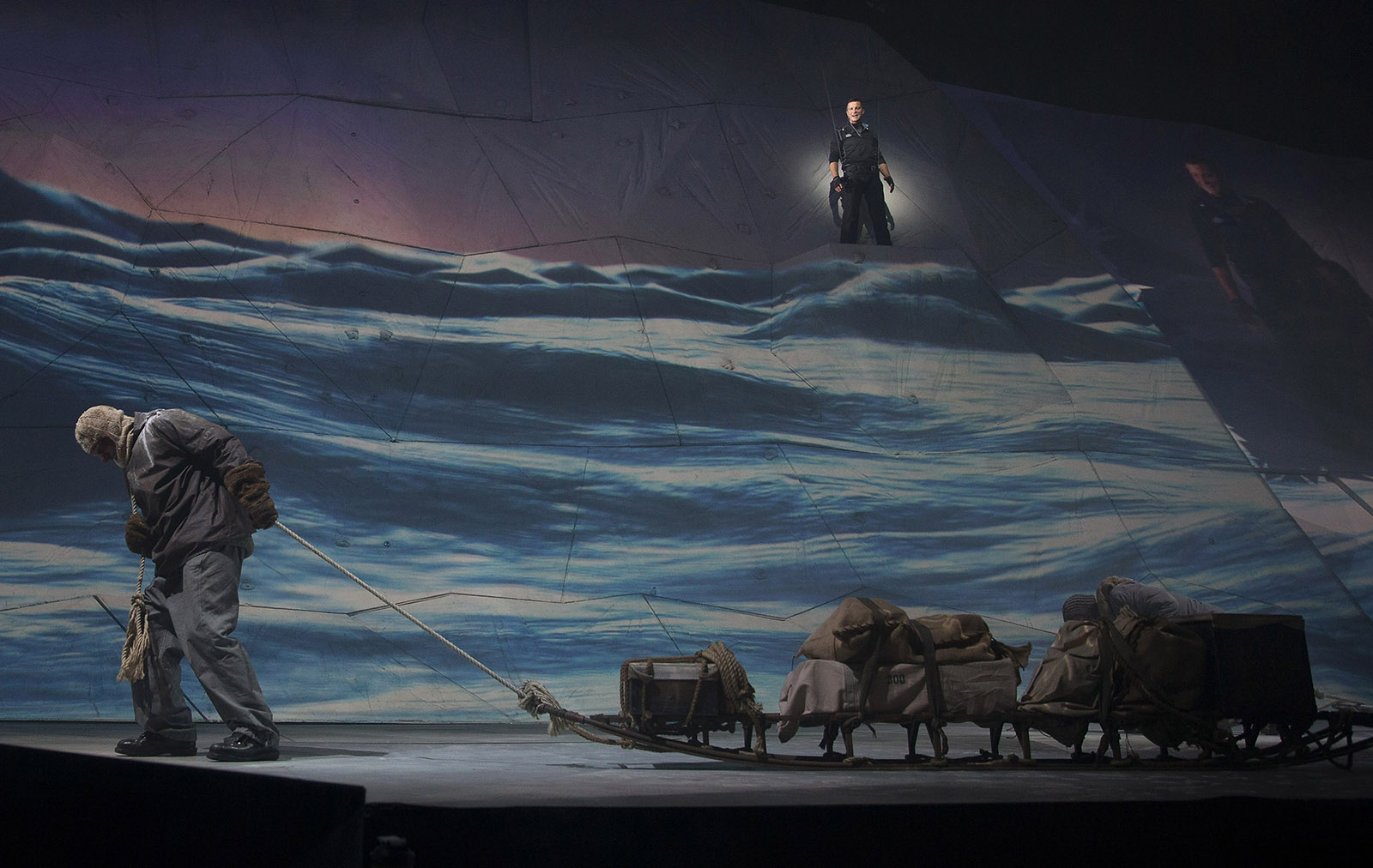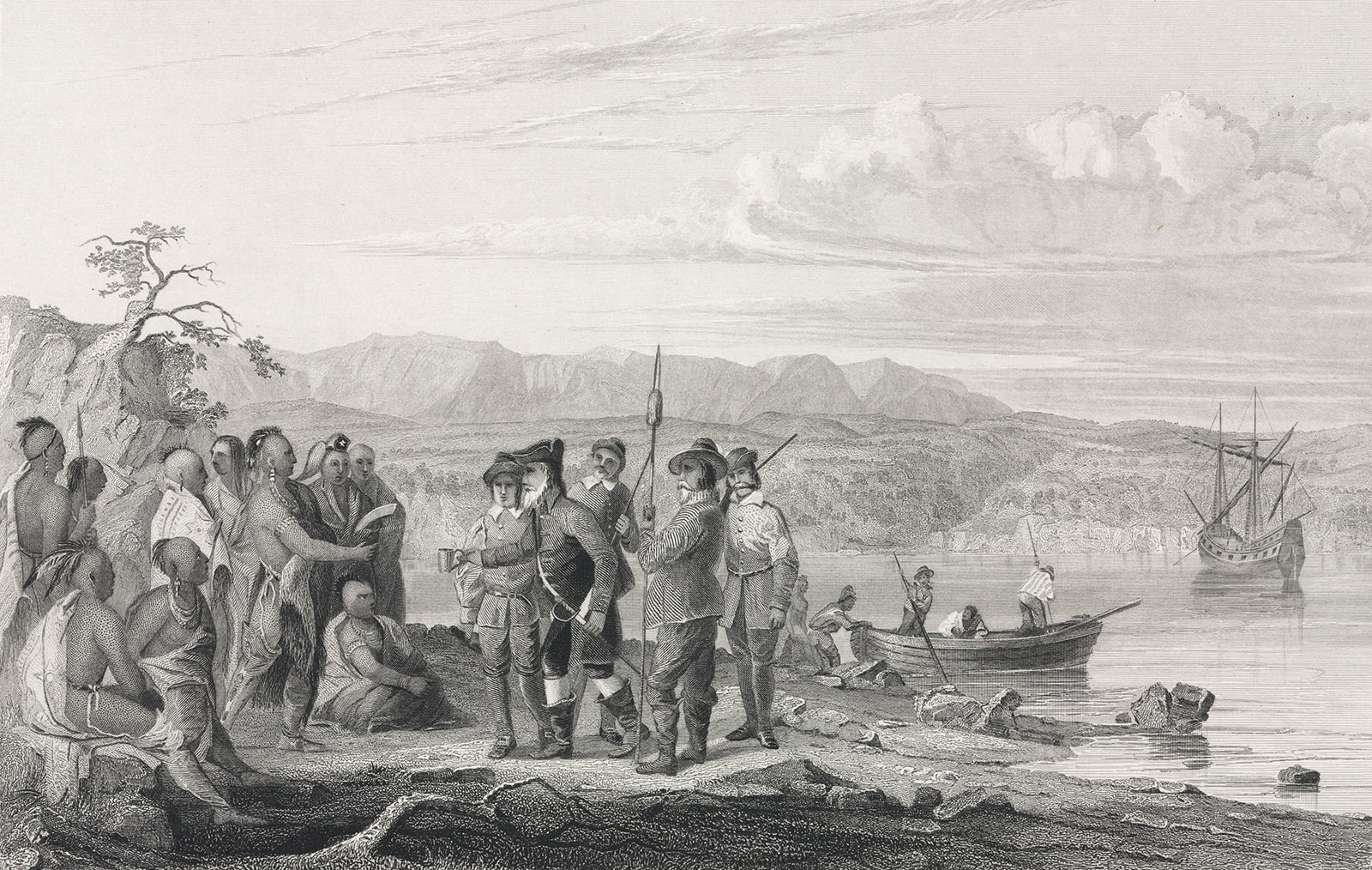For a brief instant before his canoe was sucked over the edge of a hitherto unknown twenty-five-foot waterfall in 2012, Adam Shoalts tasted triumph. For four years, he had been obsessed with the goal of paddling the entire length of the Again River, an obscure and almost unreachable waterway in the Hudson Bay Lowlands of northern Canada that, according to the annals of both historical and modern exploration, had never been navigated before. Now, as he and his battered boat plunged toward the frothing water and rocks below, he could finally confirm that existing maps of the area, derived from aerial and satellite imagery, definitely omitted some significant geographical features. Once he’d dragged himself and his battered canoe from the water, it was a moment to savor.
Shoalts grew up in southeastern Ontario as a would-be explorer who was told repeatedly he’d been born in the wrong century: there was nothing left to explore, no terra incognita in need of mapping. But he eventually spotted a loophole. Yes, the whole world had been mapped—but how well? As late as 1916, the Geological Survey of Canada calculated that the cumulative area of true blank spots on the country’s maps was 900,000 square miles, an area more than three times the size of Texas. The rise of aerial surveying soon filled in those gaps, but at the cost of accuracy on the ground. Mapping landscapes from the air, Shoalts wrote in Alone Against the North, his 2015 account of the Again River expedition, “is no more like exploration than staring at the moon through a telescope in your backyard is akin to the Apollo moon landings.”
Since then, the thirty-three-year-old adventurer has carved out a niche for himself as “Canada’s Indiana Jones,” as the Toronto Star once described him, and as an explorer-in-residence at the Royal Canadian Geographical Society, proclaiming to all who will listen that the Age of Exploration is not dead, after all. When I discovered Alone Against the North and Shoalts’s subsequent books (most recently Beyond the Trees: A Journey Alone Across Canada’s Arctic, published in October), I was instantly captivated. There are certainly ample moments of adrenaline and suspense and descriptions of breathtaking natural beauty in his voyages, but it’s his thirst for the unknown—the blank spots—that resonated. Finally, someone had expressed what I was chasing in my own, far more modest, wilderness trips through the forests and mountains of northern Canada.
It immediately rekindled my trip-planning fires, which had flickered low for a few years after my children were born. I was a convert to Shoalts’s more expansive view of what it means to discover something. But then I read the reviews.
*
Wilderness, the environmental historian Roderick Nash has argued, is not so much a place as an idea. Nash’s essential book Wilderness and the American Mind, which traced the long evolution of attitudes toward wild places from fear and avarice to awe and nostalgia, was submitted as a doctoral thesis at the University of Wisconsin in 1964, the same year that the Wilderness Act enshrined environmental activist Howard Zahniser’s somewhat whimsical legal definition of wilderness as “an area where the earth and its community of life are untrammeled by man, where man himself is a visitor who does not remain.”
That anthropocentric definition—wilderness is wherever we’re not—has sparked plenty of debate in conservation circles about what types of places deserve protection, from whom, and for whose benefit. “[I]f nature dies because we enter it,” another University of Wisconsin environmental historian, William Cronon, proposed in 1995, “then the only way to save nature is to kill ourselves.” But the idea of wilderness as the absence of humans remains implicit in much of how we think and talk about wild places. Nash traced this conception back to the advent of herding, agriculture, and settlement 10,000 years ago, when lines both literal and metaphorical began to be etched into the land to delineate where human dominion started and stopped. And this still has a particular American resonance thanks to the lingering influence of the historian Frederick Jackson Turner’s Frontier Thesis, first proposed in 1893, which attributed the emergence of a hardy and distinct national character in the 1800s to the century-long process of conquering the wild and untrammeled West.
You can still see this idea play out in popular survival shows like Man vs. Wild. Bear Grylls and his peers parachute into barren hinterlands that are always completely devoid of all traces of human presence, and triumph over the malign forces of nature while relying only on fortitude, MacGyver-like cunning, and occasionally, when dehydration strikes, their own bodily fluids. The same vibe of self-reliance and unflappable omnicompetence runs through Shoalts’s books—like the time, on a trip deep into British Columbia’s Great Bear Rainforest, with no gun and no bear-repellent spray, he returns to his tent to find fresh grizzly claw slashes in the bark of a nearby cedar:
Advertisement
The only tools at my disposal were a hatchet, my knife, and a folding saw, along with some rope and paracord. With these tools I could fashion a sleeping platform between four trees a safe distance off the ground… Working quickly to beat the sunset, I had to shinny up each tree and lash together the strong sticks I had cut to create a platform between four hemlocks. After the frame was finished, I cut sticks that I would bind to the rectangular platform, creating a solid floor to sleep on. For protection against the rain, I made a roof out of my tarp and enclosed the sides with hemlock boughs. To make the floor comfortable, I laid moss and more hemlock boughs over the platform. My shelter finished, it served as a rather cozy abode for the next five nights.
Though undeniably entertaining, this adversarial approach to a human-less nature, implicit even in the title Alone Against the North, carries a lot of baggage. Most obviously, it assumes either that the lands to be explored are uninhabited, or that its inhabitants somehow don’t count. The writer and explorer Kate Harris, writing in The Walrus, mocked Shoalts for claiming to have “‘discovered’ waterfalls in [the Moose Cree First Nation’s] traditional territory (when he accidentally canoed over them, no less).” The Globe and Mail’s review similarly called out his elision of indigenous knowledge and his “misguided reverence for the lumbering spirit of European colonialism.”
My initial reaction to these criticisms was defensive—on both Shoalts’s behalf and my own. After all, Shoalts had clearly addressed these concerns pre-emptively with two distinct arguments. The first was geographical: unlike more densely populated areas farther south, Canada’s subarctic wilderness is both imponderably vast and all but uninhabitable. The Again River is located in the Hudson Bay Lowlands, a swampy, bigger-than-Minnesota wetland most notable for its polar bears and for having the highest concentration of bloodsucking insects in the world. Aboriginal peoples certainly ventured into the area along its major rivers, but, according to Shoalts, they considered it “sterile country,” and there’s little evidence of sustained pre-contact indigenous inhabitation. Given the near-nonexistent settlement, along with the fact that Canada has something like three million lakes—no one has ever succeeded in counting them properly—and innumerable rivers, creeks, and ponds, the math argues overwhelmingly against the notion that humans have visited every single one of these waterways.
Of course, as Shoalts himself acknowledges, there’s simply no way of knowing for sure whether anyone in previous centuries, let alone previous millennia, has ever visited a given place. But his second argument is that this doesn’t matter, because exploration isn’t just about hair-raising adventures or breaking new ground, but about “the generation of new geographical information that adds to humanity’s stock of collective knowledge.” If someone once paddled the Again but didn’t file any report of it, preferably with an august geographical society brimming with cabinets of yellowing files that date back to earlier centuries, then Shoalts has not been pre-empted in performing the task as he defines it.
On that narrow question of whether Shoalts’s trip down the Again represents some sort of geographical first, I believe he’s right. But the broader issues raised by critics left me uneasy. Do our romanticized vision of exploration and perhaps the very concept of wilderness itself require a mental erasure of the native experience—one that echoes their physical removal from the places we now treasure as national parks? Contrary to what William Denevan, another University of Wisconsin scholar, called “the Pristine Myth,” it’s now widely accepted that the pre-contact population of the Americas was vastly greater than once thought, with some estimates exceeding 50 million. The only reason early European settlers found the land seemingly empty was that as much as 95 percent of the indigenous population had already been wiped out by European diseases transmitted at the initial time of contact. Moreover, the “primeval” landscapes and fauna, from the Great Plains to the Amazon rainforest, didn’t exist in some untouched, Edenic original form; they had already been widely and deliberately modified by fire, agriculture, hunting, and other human activity.
Advertisement
All of this undercuts the stories I like to tell myself about why I love wilderness travel—that, beyond the clean air and nice scenery, I’m experiencing the planet as it was when “we” (a pronoun I leave deliberately vague) got here. In fact, when I look back at the series of wilderness travel articles I wrote for The New York Times a decade ago, what jumps out at me is the almost monomaniacal obsession with enacting Denevan’s myth by finding unpopulated places. Camped out in the Australian outback, I boasted that it was “the farthest I’d ever been from other human beings.” Along the “pristine void” of a remote river in the Yukon, I climbed ridges and scanned the horizon: “It was intoxicating,” I wrote, “to pick a point in the distance and wonder: Has any human ever stood there?”
Rereading those and other articles, I now began to reluctantly consider the possibility that my infatuation with the wilderness was, at its core, a poorly cloaked exercise in colonial nostalgia—the urbane Northern equivalent of dressing up as Stonewall Jackson at Civil War reenactments because of an ostensible interest in antique rifles.
*
My first wilderness trip was a week-long canoe trip, at age fifteen, with two friends in Algonquin Park, a 3,000-square-mile canoeing paradise four hours north of my home in Toronto. I’d done some car camping and learned basic canoe strokes at summer camp, but I had no idea what an actual backcountry trip entailed. None of us did—we didn’t know about such technical innovations as sleeping pads and camp stoves, or even about basic skills like how to cook. Our packs were so heavy with sacks of onions, potatoes, carrots, and other bad choices that even the outfitter who rented us a canoe could barely lift them.
On the very first portage, I was lagging behind when a grouse charged at me. I stood up straight in surprise, and immediately toppled over backward, pinned like an overturned turtle. Since I couldn’t lift the pack on my own, I had to hike to the end of the portage to get my friends to return and hoist the pack onto my back again. The same thing happened on the next portage, except this time I was carrying the canoe, and it was a moose that spooked me. That evening, we discovered that dumping chunks of potato, onion, and carrot into water boiling on the fire, then adding rice, doesn’t produce a very good stew, even after waiting ten whole minutes. We stayed up half the night trying to burn surplus root vegetables to lighten our packs, with very limited success.
The eventual upshot of this bumbling display of ineptitude, strangely enough, was an incredible feeling of accomplishment. As a coddled and privileged kid whose path through life was meticulously well-signposted and more or less strewn with rose petals, I reveled in the opportunity to tackle problems on my own, with a legitimate chance of doing something wrong, in a context where errors could have serious consequences. In the years that followed, through trial and copious error, I got more competent at taking care of myself in the bush—and in consequence, started seeking out ever more remote settings so that the challenges, problems, and potential consequences remained real.
No one, in the course of my admirably progressive education, ever tried to tell me that Christopher Columbus was any kind of hero. Still, as I hiked across mountain passes or paddled down lonely rivers, I’d often daydream about what it would have been like to travel those routes for the first time—or at least, without the benefit of knowledge passed on from previous travelers or inhabitants. I read a lot about early explorers of what is now Canada—Étienne Brûlé, Alexander Mackenzie, John Franklin—but until I started worrying about the Shoalts critiques, I’d never actually read their journals.
Mackenzie, in particular, has a hallowed place in Canadian history, having completed the first overland journey across North America—a dozen years before Lewis and Clark. (I’m just saying.) His journals turned out to be as gripping as I’d expected. But reading with new eyes, I couldn’t help noticing how little of his travel involved actually venturing into the unknown. Instead, his progress amounted to a relay from tribe to tribe, shanghaiing locals into guiding his crew through each leg of the journey. “Thunder and rain prevailed during the night,” he writes at one point, “and, in the course of it, our guide deserted; we therefore compelled another of these people, very much against his will, to supply the place of his fugitive countryman.” This pattern recurs over and over.
That’s not to say Mackenzie’s voyages were easy. In fact, for both explorers and the settlers who followed, the fact that the so-called wilderness was already inhabited did little to tame their perceptions of the land. Brûlé, according to some versions of the story, was killed and eaten by Hurons who thought he had betrayed them—a legend that may owe as much to colonial mythologizing as to historical fact. “Regardless of what we might think about it today,” Roderick Nash wrote, “Indians made the New World a greater, not a lesser, wilderness for the pioneer pastoralists.” In my own intrepid-explorer fantasies, indigenous people mostly didn’t appear at all. On further reflection, I’m not sure which is worse: dismissing people as savages, or ignoring their existence altogether.
Yet I persist in believing there’s something special about paths untrodden. To read accounts of Antarctic exploration, or even early space travel, is to find some of the same fire that animates Shoalts. In these cases, there are no native life forms (that we know of) being brushed aside. Granted, there are heavy doses of nationalism, mercantilism, and ego at work, but there’s also something else there that’s harder to articulate—something that’s not specific to any particular landscape or historiography. The closest I’ve come to putting my finger on it was in a conversation I had a few years ago with a University of Utah professor named Daniel Dustin.
Back in 1981, Dustin and a colleague wrote an article in the Journal of Forestry called “The Right to Risk in Wilderness,” in which they proposed the creation of “no-rescue” wilderness zones in places like Gates of the Arctic National Park in Alaska. The idea has never been adopted, but over the years it has proven to be a provocative spur to discussions about what it is people are seeking in the wilderness. “Publicly you could never say this is a good idea, because it sounds so heartless and cruel,” he admitted to me. “But my point is that in our culture, we glorify a few experts who do this sort of thing, and we’ll put ’em on television, maybe create a reality TV show or whatever, but if every man wants to do it, stretch herself or himself, we somehow suggest that that’s just ridiculous.” Even three decades after the original article, Dustin didn’t have a simple answer for what you’d get from a trip to a no-rescue zone. But the ideas he spitballed—the opportunity to face the unknown, to take personal responsibility, to become self-reliant—somehow reminded me of that first day of my first canoe trip, backing away from a moose and eating undercooked rice.
*
Earlier this fall, I took my daughters, aged three and five, on a hike along the Humber River, which passes just a few blocks from the west-end Toronto house where I grew up and where, after a few decades away, I now live again. I wanted to show them a secret place where my friends and I had played as kids. It’s quiet and rarely visited, partly because it’s on a hilltop surrounded by overgrown forest, and partly, I suspect, because it now overlooks a sewage treatment plant near the mouth of the river. We clambered up the steep and narrow trail, pausing to check a mulberry tree whose last berries had already fallen, and to watch a deer dart into the lightless forest. Close to the top, there was a giant rock, erected in 1967, with an accompanying inscription whose details I’d forgotten:
DISCOVERY POINT
FROM A NEARBY SPOT LAKE ONTARIO WAS FIRST SEEN BY A WHITE MAN
ETIENNE BRULE
september 9 1615
TO BRULE AND ALL LIKE
ADVENTUROUS SPIRITS
WHO LAID THE FOUNDATIONS
OF OUR NATION
THIS MEMORIAL IS DEDICATED
Someone had circled WHITE MAN in red marker and added, in a bold scrawl, “fuck that.” As a kid, this rock had fired my imagination, but in my memory I’d conveniently elided its not particularly subtle message. I paraphrased the gist for my older daughter, omitting the white pride shout-out and filling in some background about the Huron-Wendat people who already lived here before Brûlé’s long trip down the Humber Portage. But I soon realized that my revised version made it hard to explain why this particular spot was special. My daughter, who had experienced her first backcountry canoe portages on a trip a few weeks earlier, immediately got hung up on the mystery of why and how Brûlé would have lugged such a big rock around on his travels. I let my history lesson trail off.
Then I suggested that we keep walking, deeper into the forest.






